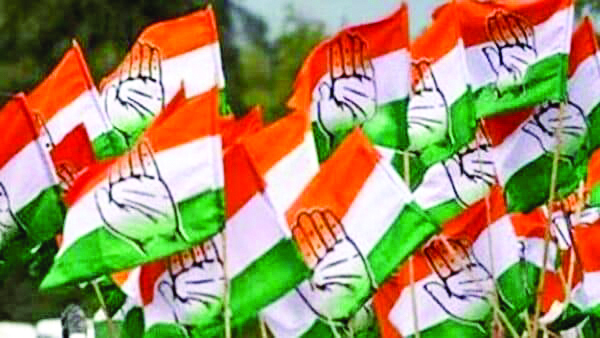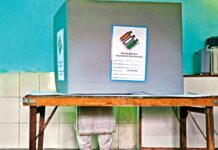As the crucial Haryana municipal polls unfold, Congress appears unprepared.
Chandigarh: Once known as a political powerhouse in Haryana, which produced stalwart leaders like Bansi Lal, Bhajan Lal, Bhupinder Singh Hooda, Birender Singh, Kiran Choudhary, Kumari Selja, and Rao Inderjit Singh, the Congress – the grand old party – is now grappling with an existential crisis in the state.
With Haryana heading to municipal elections on March 2, the party is going through its worst period, thanks to internal strife, leadership crises, and desertions that have weakened both the contenders and grassroots Congressmen.
The biggest challenge for the Congress in Haryana is the deep-rooted factionalism within its ranks. Despite winning 5 out of 10 Lok Sabha seats with a 47.61% vote share against the ruling BJP’s 46.11%, the power struggle between former Chief Minister Bhupinder Singh Hooda and senior leader Kumari Selja during the 2024 Assembly elections led to the party’s downfall. Both leaders struggled to secure maximum tickets for their supporters to strengthen their claims for the Chief Minister’s post.
Hooda, a Jat leader, managed to secure 72 out of 90 tickets for his loyalists, sidelining Selja, a prominent Dalit face of the Congress. The battle for dominance over the party resulted in a disjointed campaign and weakened the Congress’s overall position.
Due to differences between top party leaders and the dominance of the Hooda faction, Congress faced an unexpected defeat in Haryana. The election outcome surprised pollsters, as the Congress could win only 37 seats in the 90-member house.
Moreover, the party’s persistent indecisiveness continued after the elections, as Congress failed to elect its Legislative Party Leader, leaving the post of Leader of Opposition (LoP) in the state Assembly vacant for more than four months.
According to political experts, the crises in Haryana are equally the responsibility of both the state and central leadership of Congress.
Rohtak based political analyst Satish Tyagi said “The party high command has made no efforts to address these crises. If the leadership remains inactive, Congress may face a total collapse. Top leaders are not actively campaigning in the municipal elections, fuelling widespread dissatisfaction. This discontent could have a ripple effect in other states, particularly in neighbouring Punjab, where Congress still has a chance.”
“The Congress high command did not act in time to resolve the crises in Haryana. For over 11 years, the party has failed to appoint office-bearers at the grassroots level, leading to a disorganised structure. The absence of district and block-level leadership has left party workers demoralised, with no clear roadmap for revival”, said Ramji Lal, a retired Political Science Professor and former Principal of Dayal Singh College, Karnal.
Voices of dissent within Congress have also become more common, as senior and junior leaders accuse the party leadership of mishandling the situation in Haryana. Senior leader and former MLA Sumita Singh has openly expressed concerns about the lack of organisational appointments, stating, “No party worker can proudly say he holds a position in Congress because, except for the state president, there is no organisational structure.”
On the other hand, the ruling BJP’s aggressive expansion in Haryana has been fuelled by these defections, strengthening its voter base while leaving Congress in disarray. The BJP has strategically poached top Congress leaders, further weakening the party. Key figures such as Rao Inderjit Singh, Kiran Choudhary, Dharambir Singh, Naveen Jindal, Kuldeep Bishnoi (Bhajan Lal’s son), Arvind Sharma, and Shruti Choudhary have switched to the BJP, along with hundreds of junior leaders and former MLAs. The desertions continued with the recent defection of Bishan Lal Saini, Trilochan Singh, Narender Sangwan, and Ram Niwas Rada, dealing a fresh blow to the party.
“The exodus of senior leaders has not only cost Congress key constituencies but has also demoralised its workers, who see little hope of revival under the current leadership. The BJP is the only party people see as a ray of hope,” says former MLA Bishan Lal Saini.
Since the first parliamentary elections in 1967, the party has dominated Haryana, consistently securing a high vote share. However, it faced upheaval, even though it failed to win a single seat only thrice—in 1977, 1999, and 2019—despite stalwarts like Bansi Lal and Bhajan Lal leaving at different times and forming their own parties. But the party’s strength forced both to merge their breakaway outfits back into Congress.
The present situation is worse, with the party’s top leaders failing to handle the crisis, giving the BJP a significant chance to dominate the state’s politics.
Congress’s decline in Haryana began with the rise of the BJP in 2014, as the saffron party capitalised on the social divide that began in 2005 when the party picked Hooda as CM, sidelining the stalwart Bhajan Lal, which jolted its non-Jat vote bank. By picking Hooda, a Jat face, Congress aimed to counter the Chautala-led INLD, which had once been dominant in rural Haryana.
Though Hooda secured a second term in 2009, Congress fell short of a majority, winning 40 seats and relying on five defectors from HJC, led by Bhajan Lal’s son, Kuldeep Bishnoi. During Hooda’s regime, the state witnessed the Jat agitation for OBC reservation.
Before the 2014 election, the Hooda-led Congress government included Jats (including Sikh Jats) and three other castes (Ror, Tyagi, and Bishnoi) in a new “Specially Backward Classes” category, granting them an additional 10% quota in government jobs and educational institutes. This move backfired and helped the BJP win 7 out of 10 Lok Sabha seats in 2014 in a state where it had negligible presence. Later, the Supreme Court in 2015 negated the UPA government’s decision to include Jats in the OBC category, leading to the Jat agitation in the state in 2016.
The reservation move also disturbed Congress’s base among the OBCs and general castes like Brahmins, Baniyas, Punjabis, and Rajputs. BJP capitalised on the resulting social divide, riding the Modi wave to win 47 seats in 2014, reducing Congress to 15. Since then, Congress has failed to make a comeback as the BJP focused on other prominent communities, including Punjabis, OBCs, and Brahmins, and won three consecutive Assembly elections, pushing Congress and the Indian National Lok Dal (INLD) aside.
Now, as the crucial Haryana municipal polls unfold, Congress appears unprepared, with top leaders absent from campaigning. Its leaders are missing from the campaign trail, leaving candidates and local workers demoralised. There are reports that Rahul Gandhi met with some party leaders from the state, and most of them were from the anti-Hooda camp. There are also reports that the Congress party is planning a major overhaul in the state, but a section of party leaders believes that sidelining Hooda would further deepen the crisis in the party.








